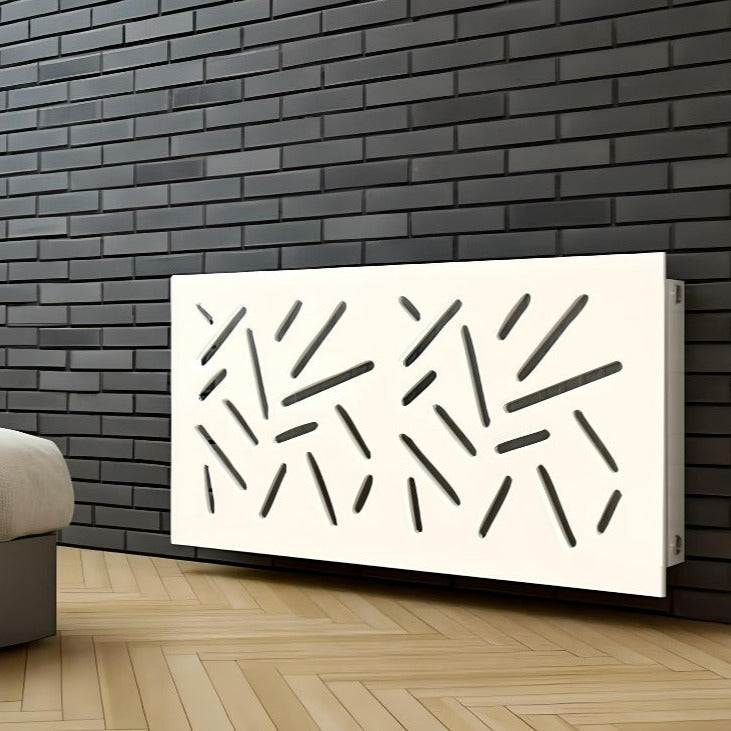Change Your Area with a Stylish Radiator Cover
Change Your Area with a Stylish Radiator Cover
Blog Article
Radiator Covers: Comprehending Products, Styles, and Advantages
Radiator covers serve both aesthetic and useful functions within a home, using a variety of materials such as hardwood, metal, and MDF to match different style preferences. As designs evolveâEUR" from standard to contemporaryâEUR" these covers not only boost the aesthetic charm of a space yet likewise add to safety and security and power efficiency. Choosing the ideal radiator cover involves recognizing the nuances of products, designs, and their linked benefits. This expedition raises crucial inquiries regarding how these aspects incorporate right into your living setting and what considerations need to assist your selection procedure.
Kinds of Products


Wooden covers, commonly crafted from hardwoods such as oak or maple, provide a traditional, cozy look that enhances typical insides. Their toughness and ability to be tarnished or repainted add to their versatility. Steel covers, generally made from steel or aluminum, are preferred for their toughness and contemporary appearance, usually including smooth lines that enhance modern spaces.
MDF, a manufactured timber item, is popular for its cost-effectiveness and simplicity of personalization. It can be painted or ended up to match existing design while providing a smooth surface area. Plastic covers, while less typical, are light-weight and immune to wetness, making them appropriate for moist settings.
Eventually, the selection of material for a radiator cover must line up with the homeowner's style preferences, functional needs, and the details environment where the cover will certainly be installed. Each product uses a distinct character, making sure that there is an alternative to match every taste and setup.
Popular Layout Styles
Stressing visual appeal, preferred layout styles for radiator covers reflect a series of preferences and indoor style fads. Standard styles usually feature intricate woodwork and luxuriant outlining, making them appropriate for traditional or vintage-inspired insides. These covers usually incorporate carved elements, providing a warm and welcoming feel to any area.
In contrast, contemporary designs concentrate on minimal visual appeals, characterized by tidy lines and downplayed style. Products such as steel or sleek wood with a smooth finish are frequently used, allowing these covers to blend flawlessly right into modern-day rooms. Industrial styles, on the other hand, embrace resources like exposed steel and concrete, adding a strong statement to loft space or city settings.
For those seeking an unique touch, bespoke layouts offer customization options that accommodate private choices, allowing homeowners to select shades, patterns, and materials that complement their decor. Furthermore, farmhouse-style covers incorporate rustic components, featuring troubled timber and easy kinds that stimulate a comfy, country charm.
Advantages of Radiator Covers
Radiator covers not just improve the aesthetic charm of a space however likewise use numerous useful advantages that make them a beneficial enhancement to any kind of home. Among the main advantages is safety and security, specifically in houses with pet dogs or youngsters. Covers reduce the danger of burns from warm radiator surfaces, ensuring a much safer atmosphere.
Furthermore, radiator covers can improve energy effectiveness. By routing warm right into the room as opposed to enabling it to run away, they help maintain a constant temperature, minimizing home heating prices gradually. This is especially advantageous in older homes where radiator systems may be much less effective.
An additional significant benefit is noise reduction. Radiators can sometimes generate undesirable audios during procedure, and covers can assist smother these noises, adding to an extra peaceful living space. Additionally, radiator covers can be functional, giving added storage space or screen space, click reference thereby making the most of the utility of often-overlooked locations.
Last but not least, they can secure radiators from dust and debris, which can prevent efficiency and boost upkeep requirements. With these integrated advantages, radiator covers become a useful solution for enhancing both the performance and style of any home atmosphere.
Installation Considerations
Installing radiator covers requires mindful factor to consider to make sure both capability and safety (Radiator cover). First, examine the measurements of your radiator and the surrounding space to make sure a proper fit. Accurate measurements are essential; an uncomfortable cover can block warmth circulation or develop security hazards
Following, assess the material of the cover. While timber supplies aesthetic appeal, metal choices may give better longevity and warm resistance. Take into consideration the weight of the cover as well; much heavier covers might need additional support or reinforcements to avoid drooping or damage in time.
Ventilation is one more essential element. Covers have to feature adequate air movement to stop overheating and keep effective heating. Search for styles with slats or openings that enable warm to flow without blockage.
In addition, make certain that the cover is firmly placed to avoid accidents, especially in homes with children or pets. Radiator cover. It's advisable to follow the manufacturer's installation standards very closely and, if essential, get in touch with a specialist for intricate setups
Maintenance and Care Tips
Correct upkeep of radiator covers is important for guaranteeing their durability and optimal efficiency. For painted or wood covers, take into consideration a suitable gloss or protective coating to preserve their appearance.
Inspect the covers occasionally for indications of wear Radiator cover or damage, such as fractures or peeling paint. Resolving these problems promptly can stop further damage. Guarantee that the covers are firmly fastened and look for any loosened screws or fittings, as resonances from the radiator can loosen them in time.
In cooler months, prevent placing hefty items or attractive products on top of the radiator covers, as this can impede warm circulation and trigger unneeded tension to the framework. Finally, consider seasonal upkeep by removing the covers for thorough cleansing and examination throughout warmer months when the furnace is non-active. Adopting these easy treatment pointers will improve the efficiency and visual allure of your radiator covers, ensuring they offer their objective effectively for many years ahead.

Verdict
In summary, radiator covers function as practical and visual improvements to domestic rooms. The diverse range of materials, including woods, steel, plastic, and mdf, enables alignment with different design styles such as standard, contemporary, commercial, and farmhouse. The benefits of these covers expand beyond safety and energy performance to include extra storage space and dust defense. Careful factor to consider of setup and maintenance more guarantees the long life and effectiveness of radiator covers in any type of home environment.
Radiator covers offer both visual and useful functions within a home, offering an array of materials such as steel, wood, and mdf to match different layout choices. Picking the ideal radiator cover involves recognizing the nuances of products, designs, and their associated advantages.Stressing aesthetic allure, popular style styles for radiator covers show a range of tastes and interior style fads.Radiator the original source covers not just boost the aesthetic allure of an area yet also use numerous functional benefits that make them a rewarding addition to any type of home. Take into consideration the weight of the cover as well; larger covers may need extra support or reinforcements to stay clear of sagging or damages over time.
Report this page